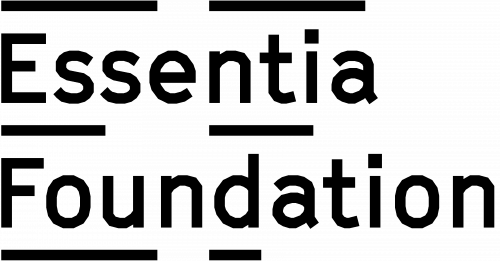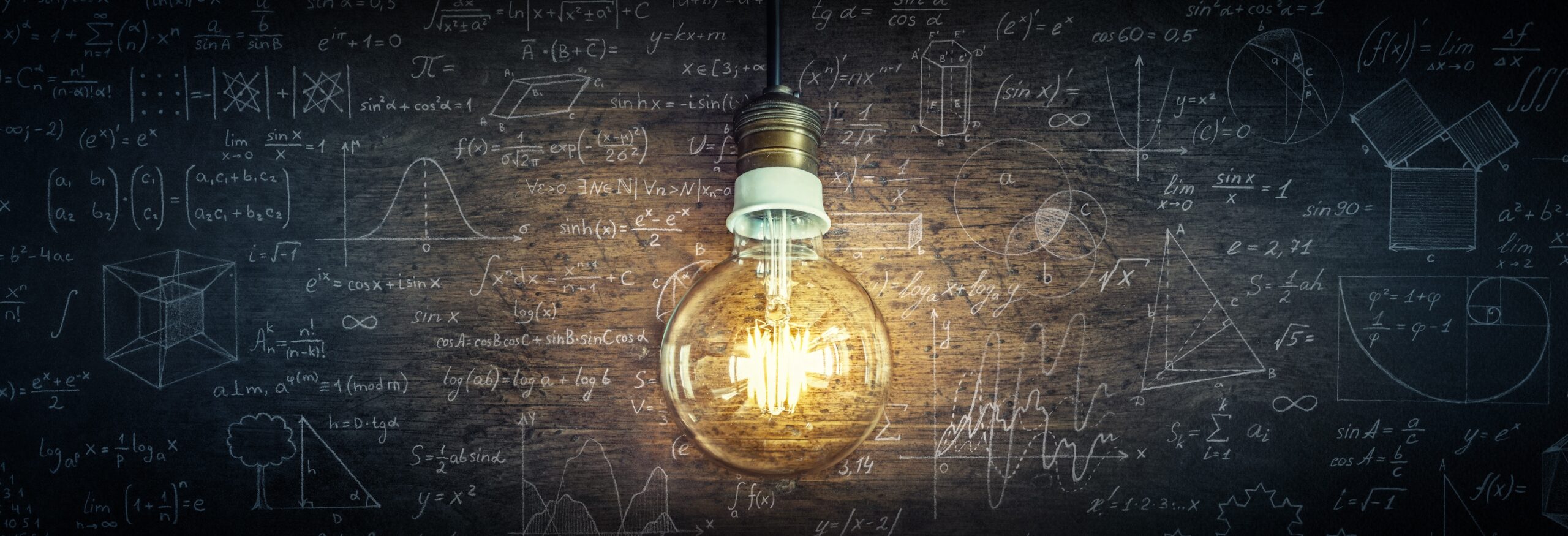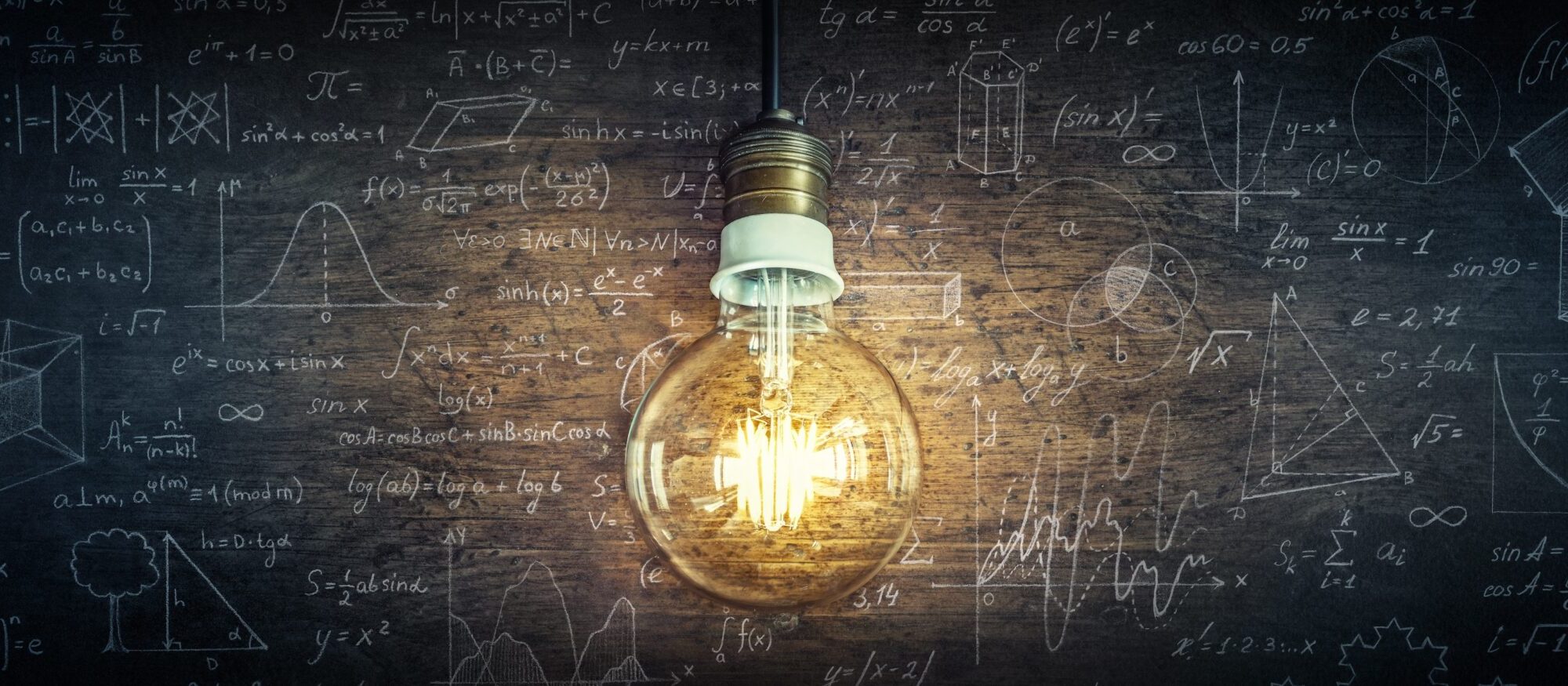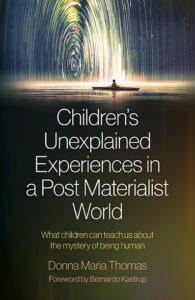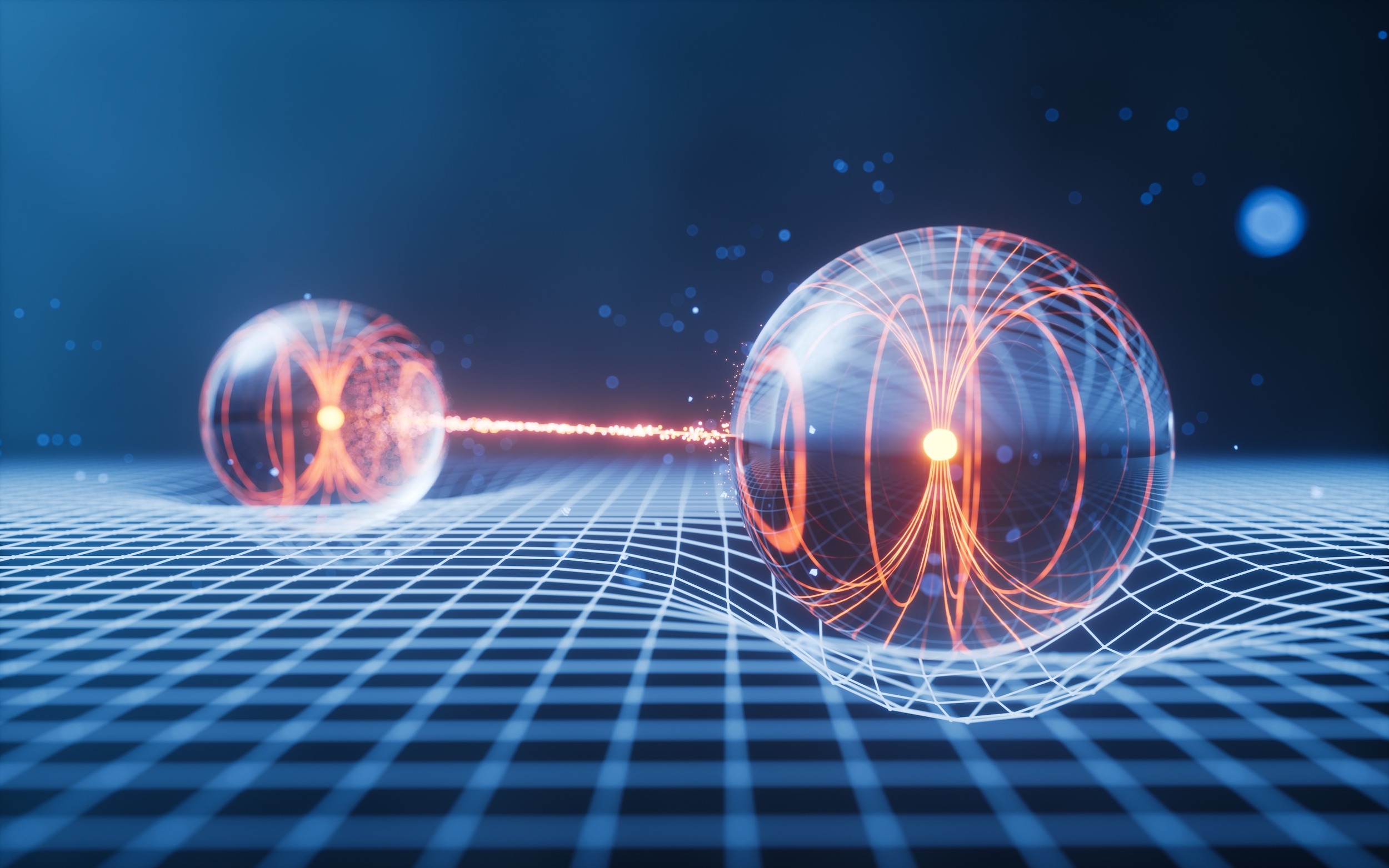Deconstructing the intuitions underlying physicalism and illusionism
Reading | Metaphysics
![]() Arthur Haswell, BA | 2025-02-07
Arthur Haswell, BA | 2025-02-07

Arthur Haswell offers a devastating and delightfully well-argued deconstruction of the absurdities inherent in physicalism and its sibling, illusionism.
After we came out of the church, we stood talking for some time together of Bishop Berkeley’s ingenious sophistry to prove the non-existence of matter, and that every thing in the universe is merely ideal. I observed, that though we are satisfied his doctrine is not true, it is impossible to refute it. I never shall forget the alacrity with which Johnson answered, striking his foot with mighty force against a large stone, till he rebounded from it, “I refute it thus.” [1]
Dr Johnson’s famous refutation of Berkeley’s idealism has become emblematic of the intuitive appeal of the belief in physical stuff. To this day, when many people are confronted with the idealist claim that the world is fundamentally constituted of mental stuff, they express a like incredulity towards the idea. It seems clearly absurd to suggest that the world is entirely constituted of the spooky, ectoplasmic mind-juice our physical brain secretes. Metaphysical physicalism takes the intuitive charm of Johnson’s ‘appeal to the stone’ to its ultimate conclusion, theorising that the world is in fact entirely constituted of physical stuff, and anything that seems to be nonphysical (such as ectoplasmic mind-juice) is somehow unreal or wholly reducible to the physical.
But does Johnson’s appeal to the stone still have the same appeal today? It may not. One point that may spring to mind is the hackneyed claim that modern physics tells us that matter is mostly empty space. However, this is a misconception. Rather, while the dense nucleus is minute compared to the full volume of the atom, the rest of the atom, while far less dense, is not constituted of empty space, but electrons existing as probability density waves. This is concrete science. However, it remains counterintuitive, much like the idea that matter is mostly empty space. Furthermore, the solidity of a rock is not due to its being constituted of myriad hard, microscopic simples, but the electromagnetic repulsion generated by electron fields.
“I refute it thus!” said Johnson, kicking against a mass of probability density waves that electromagnetically repelled his foot.
To my mind, this doesn’t have the same down-to-earth charm as the original appeal to the stone. But then again, physicalism doesn’t entail that atoms are metaphysically fundamental, and idealism doesn’t entail that they have no existence. An idealist and a physicalist could agree that atoms exist, yet neither would claim they are ontologically primitive. So we need to go deeper in order to discover what the contemporary physicalist believes reality (and therefore the physical) fundamentally is. By ‘fundamental’ I mean the very ground of reality: that which cannot be reduced to something more basic, because there is nothing more basic.
In Consciousness and Fundamental Reality, Philip Goff characterises “pure physicalism” as the belief that a mathematico-nomic description of reality is exhaustive. I think this is correct. It seems to me that the physicalist considers the physical to have a fundamentally mathematico-nomic nature. Or in other words, the physicalist believes that the physical stuff that constitutes fundamental reality is nothing more nor less than the mathematical structures and natural laws that physics describes it as. Perhaps with this understanding of the physical, Johnson’s appeal to the stone will retain its original power.
“I refute it thus!” said Johnson, kicking against a mass of mathematico-nomic forms.
This still doesn’t seem very intuitively compelling. Even worse, the idea that reality is fundamentally constituted of mathematical forms sounds worryingly platonic, and Platonism is generally considered more closely associated with idealism than physicalism. Nevertheless, there are some, like Max Tegmark, who are happy to consider themselves physicalists while contending that reality has a fundamentally platonic nature to it. They can do this by claiming that, while fundamental reality is mathematically platonic, it is also non-mental. Hence, another way of framing physicalism is in a negative sense: reality is fundamentally and monistically constituted of the physical, the physical is intrinsically non-mental, so therefore physicalism is a view that includes the claim that fundamental reality is non-mental.
The problem with this, of course, is that the physicalist is then forced to explain how there is mental content in a reality solely constituted of non-mental stuff. This essay is far too brief to provide a contribution to the interminable discourse on this subject, but in short I don’t believe that such a conception of physicalism can account for mental content (for a more detailed exploration of why I think this is the case, see my previous article, If you dream of a triangle, where does the triangle exist? [2]). I don’t believe that warmth, sadness, pain, fear, umami, joy, or any other phenomenal content, can coherently be claimed to exist in a reality negatively defined as not including such content. I don’t think claims of supervenience work without contradicting physicalism’s premise and collapsing into some form of dualism or dual-aspect monism, and I believe that the various dialectical Heath Robinson machines constructed to account for mental content in a physicalist conception of reality are merely attempts to obfuscate this fact. Whether you agree with this or not, at the very least you might agree that supervenience arguments hardly have the intuitive, straightforward appeal of Johnson kicking his rock.
One move that is then open to the physicalist is to deny that mental content exists. Perhaps the most trendy way of doing this is by claiming that warmth, sadness, pain, fear, umami, joy, and all other mental content, are somehow illusory.
This is known as ‘illusionism.’ One might worry that this would mean that the unfathomable, unbearable pain a mother feels when grieving over her dead son is merely an illusion, and is actually just a bundle of mathematico-nomic forms. In fact, such a claim might seem to entail that the infinite horror of history’s greatest atrocities never really happened. This, of course, seems to wrest us of our humanity and devalue the greatest of our tragedies. More pertinently, such a position feels deeply counter-intuitive.
However, those who defend the illusionist position would baulk at the previous paragraph. This is because, while they claim that mental content is illusory and non-existent, they also assert it isn’t illusory and is existent. For example, the illusionist Keith Frankish is happy to affirm that consciousness exists, but on the other hand he suggests that consciousness doesn’t afford us a direct understanding of its own reality, and this leads to it creating an illusion of its own existence, when in fact it doesn’t really exist [3]. The claim that we can’t know the ‘true’ nature of mental content, such as pain, is vulnerable to Descartes’ evil demon argument: even if an evil demon or neural processes create all our experiences, we remain stuck with their presence. When confronted with this point, the illusionist can claim that they are not denying that there are experiences; it’s just that we don’t have direct access to their true reality. But then, of course, whatever it is that is obscuring this reality must have some form of existence too, in order for it to be an obstruction, and it can’t itself be the reality it is obscuring, as then we would be accessing this reality directly by simply feeling pain. For the physicalist, reality is physical, so whatever is obstructing us from accessing reality mustn’t itself be physical, or it wouldn’t be an obstruction and we would simply be accessing reality by accessing the ‘obstruction.’ It is also strange that, while the illusionist does not have access to the true nature of her own pain, she does have access to a non-arbitrary, non-illusory, seemingly transcendental criteria that allows her to evaluate veridically what is deserving of being valued as ‘real’ and what is deserving of being valued as ‘illusory.’
In fact, yet another assessment of illusionism’s contradictions is pointless, as at heart it is just a motte-and-bailey argument. When attacking, the illusionist may claim that there is no hard problem of consciousness, that consciousness is just neural activity, or that qualia don’t exist and that this entails that experience doesn’t exist. When defending, the illusionist may claim that illusionism isn’t even about the hard problem, that illusionism isn’t physicalist, that they don’t deny experience (they just think the concept of qualia is faulty), or that, in fact, illusionism doesn’t really make any ontological or metaphysical claims at all. Perhaps there is some particularly radical version of dialetheism that could accommodate such contradictions, but even if this were so, it would seem a long, long way from Johnson’s no-nonsense appeal to the stone.
There is, however, seemingly one further option available to the physicalist. The philosopher Pete Mandik has made a claim that, if true, could be very worrying for those not under the spell of hylomania. One of the most famous arguments against physicalism is known as ‘Mary’s room,’ or the ‘knowledge argument.’ It imagines a woman who has spent her entire life in an entirely monochrome room, but who learns everything science can possibly discover about the experience of seeing red. Following this, she finally leaves the room and sees a red apple; her first experience of seeing red. The question then is, has Mary learnt something new by seeing red, even after she has learnt everything science can possibly discover about the experience of seeing red? Some physicalists claim that she would learn something new, but as this shows merely an epistemological gap, rather than an ontological one, it doesn’t disprove physicalism (as mentioned earlier, my problem with this view is that I believe it collapses into some form of dualism or dual-aspect monism). Others, however, claim that she could, at least theoretically, indeed learn what it is like to see red without actually seeing red. Mandik has gone one step further and suggested that this isn’t merely a theoretical possibility: he claims that “Science proves that Mary knows what’s (sic) seeing red is like in advance” [4]. The proof he cites is a study conducted by the University of Chicago, which examined Kim, a woman without somatosensation, and found that she was able to coherently use metaphors about the sense she lacked. Here is a quote from Peggy Mason, the neurobiologist who ran the study:
Because Kim can’t perceive tactile sensations, she relies on other senses to perceive the world. For example, to determine the hardness of an object, she listens to what kind of sound it makes when she strikes it against a surface. [5]
Obviously, this is not at all the same thing as Kim learning to perceive tactile sensations. It merely shows that she can use other senses to infer what people who do have tactile sensations might say about an object, such as using certain sounds to infer whether they might say “it’s hard” or “it’s soft.” In relation to the knowledge argument, it does not show that Mary knows what it is like to see red in advance of actually seeing red; it just shows that she could learn what kinds of words people might use upon seeing red. As Noam Chomsky said of the like-minded Pat Churchland [6], Mandik is simply missing the point. The only way to make sense of it would be to understand Mandik as thinking that there never is an experience of red at all, there are only arrangements of words and behaviours in particular contexts. Aside from these mere motions, there are no experiences. We are merely philosophical zombies, mindless automata without warmth, sadness, pain, fear, umami, or joy. When I move my hand to itch my ear, no itchiness impels me. The mechanism of my body is simply operating in this fashion without a prior sensation compelling it to do so. I am itching without an itch.
The likes of Daniel Dennett, the Churchlands, Frankish and Mandik have made entire careers out of missing the point. Their conceptual edifices rely on missing the point, so they have to be very careful to keep doing so. But successful as this strategy may be for maintaining a career, it doesn’t appear to be successful in the same way that Johnson’s appeal to the stone was. Even worse, any theory that entails that experience doesn’t exist (whether they admit it does or not) is very disquieting. We have to be honest with ourselves and reckon with what this really means. For example, it means that the crimes of the 20th century didn’t really create any anguish at all, as there is simply no such thing. There must also be no love, hope, joy, or sorrow. If one were going to make an argument that entailed such a thing, one would want to be very sure it was true. Yet not only is such an argument profoundly degrading to all life, it is also patently bizarre. Again, this is a long way from the comforting level-headedness of Johnson kicking a rock.
The style of this article is polemical, because I am not attempting to analytically prove the falseness of physicalism (for a book that does just that, I recommend Daniel Stoljar’s Physicalism), but to bring to light its extraordinary strangeness. As a kind of metaphysical Weltanschauung, it is so ingrained in our culture that it is often simply presumed to be true by default. Yet, most people are unaware of how strange its implications are. Daniel Dennett, perhaps the most famous physicalist philosopher of the last half-century, contested that, if every person in China used walkie-talkies to simulate the behaviour of neurons in the brain, this arrangement would have consciousness in much the same way you or I do [7]. I don’t wish to argue over whether this is true or false, and no doubt to the functionalist it makes perfect sense for ‘China brain’ to dream. But there is no escaping how weird such a conclusion is.
Are the alternatives any less counterintuitive? Surely, a belief that the world is constituted of some ectoplasmic mind-juice is far more silly. But of course, this isn’t what idealism is suggesting. The problem with using terms like ‘mind stuff’ is that, when we think of ‘stuff’ we naturally think of intuitively ‘physical’ matter, much like Johnson’s stone. It is difficult to understand what someone could mean by there being globs of thoughts making up the world. But anyone who is still thinking of idealism in this way has failed to make the necessary change of aspect. In fact, I think the very idealism that Johnson intended to refute is very sober. Idealism is a broad church, and even where views are similar there may be different ways of articulating them. But as an idealist myself, I would argue that the appearance of the stone, the pain in Johnson’s toe, the sound of his shoe scuffing its rough surface, are all just what they seem to be; they are not really something else, such as mathematico-nomic forms or minuscule simples. The earthy smell of the soil beneath the stone just is the smell, just as the grief of the widow just is grief. And these experiences, just as they are, are fundamental. It makes no sense to ask what they ‘really’ are, to ask what they are reducible to, because they are the ground. This isn’t to suggest that they all exist in ‘my mind’; Berkeley, in fact, would arguably not have denied that the appearance of a stone has a source independent of his particular experience of it:
Whatever power I may have over my own thoughts, I find the ideas actually perceived by sense have not a like dependence on my will. When in broad daylight I open my eyes, it is not in my power to choose whether I shall see or no, or to determine what particular objects shall present themselves to my view; and so likewise as to the hearing and other senses: the ideas imprinted on them are not creatures of my will. There is, therefore, some other Will or Spirit that produces them. [8]
Whether or not you sympathise with idealism, it seems to me that, whereas physicalism turns the stone into something abstract and intangible, idealism saves the appearance of its solidity. If we attend to the stone in a particular way, we will encounter its molecular structure. But this encounter is not more fundamental than Johnson’s tactile encounter with it. Rather, each are different appearances within experience, and it is the latter that is fundamental. I will give the final word to Réne Guénon:
The physicists’ ‘matter’ can in no case be anything but a materia secunda, since the physicists regard it as being endowed with properties, on the nature of which they are incidentally not entirely in agreement, so that their ‘matter’ is not potentiality and ‘indistinction’ and nothing else besides; moreover, as the physicists’ conceptions relate to the sensible world and do not go beyond it, they would not know what to do with the conception of a materia prima. Nonetheless, by a curious confusion, they talk all the time of ‘inert matter’, without noticing that if it were really inert it would have no properties and would not be manifested in any way, so that it could have no part in what their senses can perceive; nevertheless they persist in pronouncing every-thing that comes within range of their senses to be ‘matter’, whereas inertia can actually only be attributed correctly to materia prima, because it alone is synonymous with passivity or pure potentiality. To speak of the ‘properties of matter’ while asserting at the same time that ‘matter is inert’ is an insoluble contradiction; and, by a strange irony, modern ‘scientism’, which claims to eliminate all ‘mystery’, nonetheless appeals in its vain attempts at explanation only to the very thing that is most ‘mysterious’ in the popular sense of the word, that is to say most obscure and least intelligible! [9]
References
- Boswell, J. (1791). The life of Samuel Johnson, LL.D. (p. 333). London: Henry Baldwin.
- Haswell, A. (2024). If you dream of a triangle, where does the triangle exist? EssentiaFoundation. Retrieved from https://www.essentiafoundation.org/if-you-dream-of-a-triangle-where-does-the-triangle-exist/reading/
- Frankish, K. (2024, September 11). Mindchat [Video]. YouTube. Retrieved from https://www.youtube.com/watch?v=NBUCYGAYY70.
- Mandik, P. [@petemandik]. (2023, April 18). Science proves that Mary knows what’s seeing red is like in advance [Tweet]. Twitter. Retrieved from https://twitter.com/petemandik/status/1648378352586178581.
- Neuroscience News. (2023, April 17). Somatosensation: Neuroscience advances understanding. Retrieved from https://neurosciencenews.com/somatosensation-neuroscience-23030/.
- Chomsky, N. (2011, April 2). Noam Chomsky and Pat Churchland on mysteries and problems in science [Video]. YouTube. Retrieved from https://www.youtube.com/watch?v=QSQwBEL4mfQ.
- Dennett, D. C. (1991). Consciousness explained (pp. 431–455). Boston: Back Bay Books.
- Berkeley, G. (1710). A treatise concerning the principles of human knowledge (Part 1, Section 29). Dublin: Aaron Rhames.
- Guénon, R. (2001). The reign of quantity and the signs of the times (p. 16). Hillsdale, NY: Sophia Perennis.
